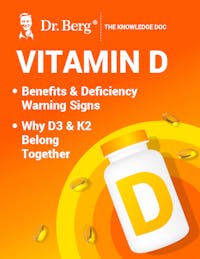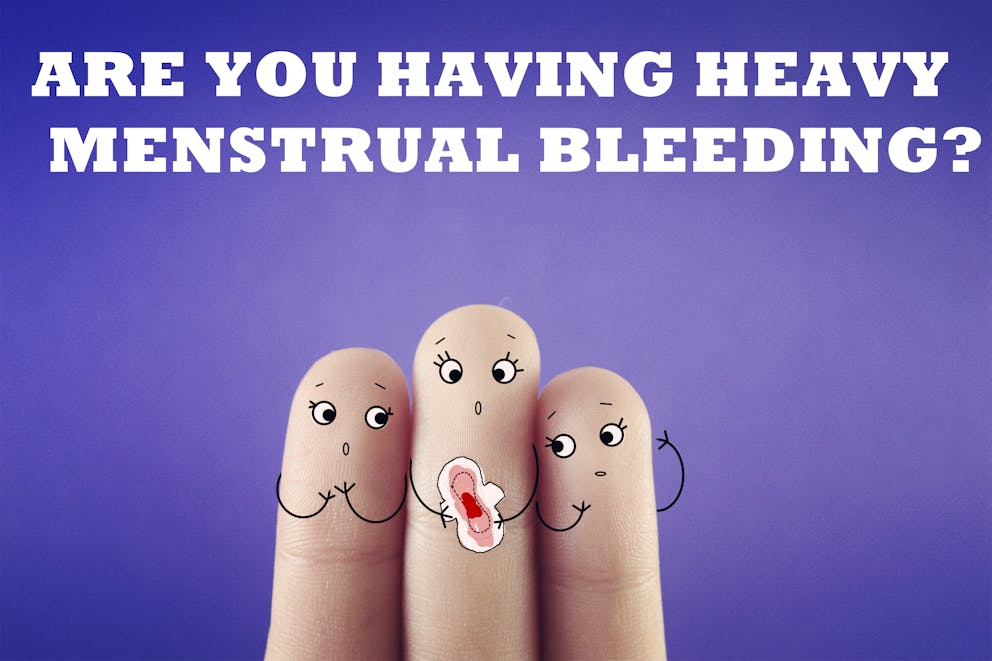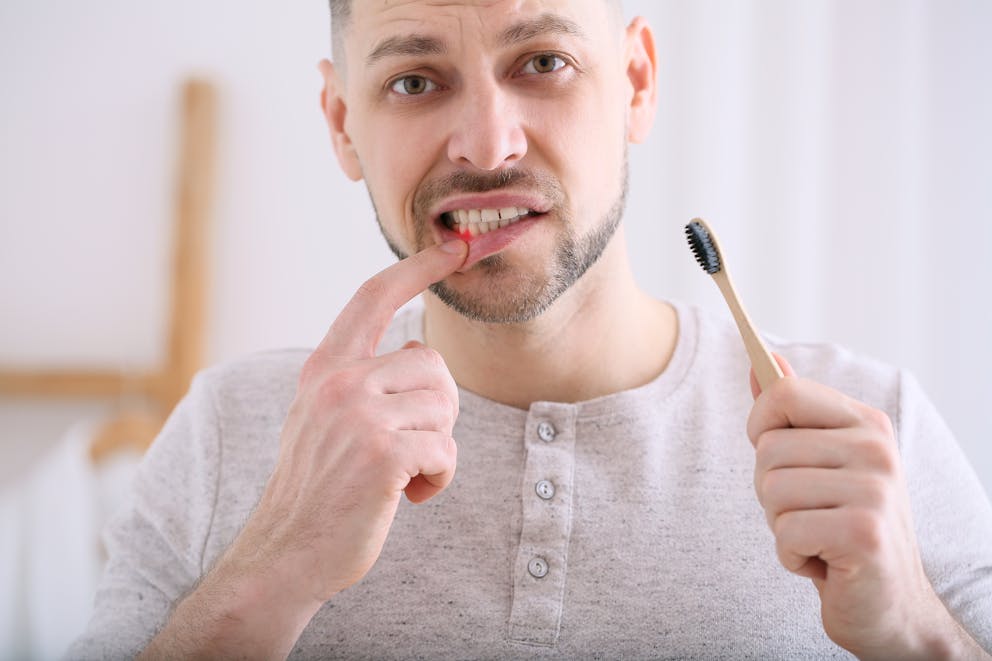Unlocking the Benefits of Vitamin K2 for Heavy Periods

Vitamin D – Benefits and Deficiency Warning Signs
Learn to recognize early signs of vitamin D deficiency
Discover how to maintain healthy vitamin D levels
Explore common factors that can contribute to vitamin D deficiency
Understand why vitamin D3 and K2 should always be taken together
Get practical advice on how to maximize the health benefits of vitamin D

Vitamin D – Benefits and Deficiency Warning Signs
Learn to recognize early signs of vitamin D deficiency
Discover how to maintain healthy vitamin D levels
Explore common factors that can contribute to vitamin D deficiency
Understand why vitamin D3 and K2 should always be taken together
Get practical advice on how to maximize the health benefits of vitamin D

Vitamin D – Benefits and Deficiency Warning Signs
Learn to recognize early signs of vitamin D deficiency
Discover how to maintain healthy vitamin D levels
Explore common factors that can contribute to vitamin D deficiency
Understand why vitamin D3 and K2 should always be taken together
Get practical advice on how to maximize the health benefits of vitamin D

Vitamin D – Benefits and Deficiency Warning Signs
Learn to recognize early signs of vitamin D deficiency
Discover how to maintain healthy vitamin D levels
Explore common factors that can contribute to vitamin D deficiency
Understand why vitamin D3 and K2 should always be taken together
Get practical advice on how to maximize the health benefits of vitamin D

Vitamin D – Benefits and Deficiency Warning Signs
Learn to recognize early signs of vitamin D deficiency
Discover how to maintain healthy vitamin D levels
Explore common factors that can contribute to vitamin D deficiency
Understand why vitamin D3 and K2 should always be taken together
Get practical advice on how to maximize the health benefits of vitamin D

Vitamin D – Benefits and Deficiency Warning Signs
Learn to recognize early signs of vitamin D deficiency
Discover how to maintain healthy vitamin D levels
Explore common factors that can contribute to vitamin D deficiency
Understand why vitamin D3 and K2 should always be taken together
Get practical advice on how to maximize the health benefits of vitamin D

Vitamin D – Benefits and Deficiency Warning Signs
Learn to recognize early signs of vitamin D deficiency
Discover how to maintain healthy vitamin D levels
Explore common factors that can contribute to vitamin D deficiency
Understand why vitamin D3 and K2 should always be taken together
Get practical advice on how to maximize the health benefits of vitamin D

Vitamin D – Benefits and Deficiency Warning Signs
Learn to recognize early signs of vitamin D deficiency
Discover how to maintain healthy vitamin D levels
Explore common factors that can contribute to vitamin D deficiency
Understand why vitamin D3 and K2 should always be taken together
Get practical advice on how to maximize the health benefits of vitamin D

Vitamin D – Benefits and Deficiency Warning Signs
Learn to recognize early signs of vitamin D deficiency
Discover how to maintain healthy vitamin D levels
Explore common factors that can contribute to vitamin D deficiency
Understand why vitamin D3 and K2 should always be taken together
Get practical advice on how to maximize the health benefits of vitamin D

Vitamin D – Benefits and Deficiency Warning Signs
Learn to recognize early signs of vitamin D deficiency
Discover how to maintain healthy vitamin D levels
Explore common factors that can contribute to vitamin D deficiency
Understand why vitamin D3 and K2 should always be taken together
Get practical advice on how to maximize the health benefits of vitamin D

Vitamin D – Benefits and Deficiency Warning Signs
Learn to recognize early signs of vitamin D deficiency
Discover how to maintain healthy vitamin D levels
Explore common factors that can contribute to vitamin D deficiency
Understand why vitamin D3 and K2 should always be taken together
Get practical advice on how to maximize the health benefits of vitamin D

Vitamin D – Benefits and Deficiency Warning Signs
Learn to recognize early signs of vitamin D deficiency
Discover how to maintain healthy vitamin D levels
Explore common factors that can contribute to vitamin D deficiency
Understand why vitamin D3 and K2 should always be taken together
Get practical advice on how to maximize the health benefits of vitamin D

Vitamin D – Benefits and Deficiency Warning Signs
Learn to recognize early signs of vitamin D deficiency
Discover how to maintain healthy vitamin D levels
Explore common factors that can contribute to vitamin D deficiency
Understand why vitamin D3 and K2 should always be taken together
Get practical advice on how to maximize the health benefits of vitamin D

Vitamin D – Benefits and Deficiency Warning Signs
Learn to recognize early signs of vitamin D deficiency
Discover how to maintain healthy vitamin D levels
Explore common factors that can contribute to vitamin D deficiency
Understand why vitamin D3 and K2 should always be taken together
Get practical advice on how to maximize the health benefits of vitamin D

Vitamin D – Benefits and Deficiency Warning Signs
Learn to recognize early signs of vitamin D deficiency
Discover how to maintain healthy vitamin D levels
Explore common factors that can contribute to vitamin D deficiency
Understand why vitamin D3 and K2 should always be taken together
Get practical advice on how to maximize the health benefits of vitamin D

Vitamin D – Benefits and Deficiency Warning Signs
Learn to recognize early signs of vitamin D deficiency
Discover how to maintain healthy vitamin D levels
Explore common factors that can contribute to vitamin D deficiency
Understand why vitamin D3 and K2 should always be taken together
Get practical advice on how to maximize the health benefits of vitamin D

Vitamin D – Benefits and Deficiency Warning Signs
Learn to recognize early signs of vitamin D deficiency
Discover how to maintain healthy vitamin D levels
Explore common factors that can contribute to vitamin D deficiency
Understand why vitamin D3 and K2 should always be taken together
Get practical advice on how to maximize the health benefits of vitamin D

Vitamin D – Benefits and Deficiency Warning Signs
Learn to recognize early signs of vitamin D deficiency
Discover how to maintain healthy vitamin D levels
Explore common factors that can contribute to vitamin D deficiency
Understand why vitamin D3 and K2 should always be taken together
Get practical advice on how to maximize the health benefits of vitamin D

Vitamin D – Benefits and Deficiency Warning Signs
Learn to recognize early signs of vitamin D deficiency
Discover how to maintain healthy vitamin D levels
Explore common factors that can contribute to vitamin D deficiency
Understand why vitamin D3 and K2 should always be taken together
Get practical advice on how to maximize the health benefits of vitamin D

Vitamin D – Benefits and Deficiency Warning Signs
Learn to recognize early signs of vitamin D deficiency
Discover how to maintain healthy vitamin D levels
Explore common factors that can contribute to vitamin D deficiency
Understand why vitamin D3 and K2 should always be taken together
Get practical advice on how to maximize the health benefits of vitamin D

Vitamin D – Benefits and Deficiency Warning Signs
Learn to recognize early signs of vitamin D deficiency
Discover how to maintain healthy vitamin D levels
Explore common factors that can contribute to vitamin D deficiency
Understand why vitamin D3 and K2 should always be taken together
Get practical advice on how to maximize the health benefits of vitamin D

Vitamin D – Benefits and Deficiency Warning Signs
Learn to recognize early signs of vitamin D deficiency
Discover how to maintain healthy vitamin D levels
Explore common factors that can contribute to vitamin D deficiency
Understand why vitamin D3 and K2 should always be taken together
Get practical advice on how to maximize the health benefits of vitamin D

Vitamin D – Benefits and Deficiency Warning Signs
Learn to recognize early signs of vitamin D deficiency
Discover how to maintain healthy vitamin D levels
Explore common factors that can contribute to vitamin D deficiency
Understand why vitamin D3 and K2 should always be taken together
Get practical advice on how to maximize the health benefits of vitamin D

Vitamin D – Benefits and Deficiency Warning Signs
Learn to recognize early signs of vitamin D deficiency
Discover how to maintain healthy vitamin D levels
Explore common factors that can contribute to vitamin D deficiency
Understand why vitamin D3 and K2 should always be taken together
Get practical advice on how to maximize the health benefits of vitamin D

Vitamin D – Benefits and Deficiency Warning Signs
Learn to recognize early signs of vitamin D deficiency
Discover how to maintain healthy vitamin D levels
Explore common factors that can contribute to vitamin D deficiency
Understand why vitamin D3 and K2 should always be taken together
Get practical advice on how to maximize the health benefits of vitamin D

Vitamin D – Benefits and Deficiency Warning Signs
Learn to recognize early signs of vitamin D deficiency
Discover how to maintain healthy vitamin D levels
Explore common factors that can contribute to vitamin D deficiency
Understand why vitamin D3 and K2 should always be taken together
Get practical advice on how to maximize the health benefits of vitamin D

Vitamin D – Benefits and Deficiency Warning Signs
Learn to recognize early signs of vitamin D deficiency
Discover how to maintain healthy vitamin D levels
Explore common factors that can contribute to vitamin D deficiency
Understand why vitamin D3 and K2 should always be taken together
Get practical advice on how to maximize the health benefits of vitamin D

Vitamin D – Benefits and Deficiency Warning Signs
Learn to recognize early signs of vitamin D deficiency
Discover how to maintain healthy vitamin D levels
Explore common factors that can contribute to vitamin D deficiency
Understand why vitamin D3 and K2 should always be taken together
Get practical advice on how to maximize the health benefits of vitamin D

Vitamin D – Benefits and Deficiency Warning Signs
Learn to recognize early signs of vitamin D deficiency
Discover how to maintain healthy vitamin D levels
Explore common factors that can contribute to vitamin D deficiency
Understand why vitamin D3 and K2 should always be taken together
Get practical advice on how to maximize the health benefits of vitamin D

Vitamin D – Benefits and Deficiency Warning Signs
Learn to recognize early signs of vitamin D deficiency
Discover how to maintain healthy vitamin D levels
Explore common factors that can contribute to vitamin D deficiency
Understand why vitamin D3 and K2 should always be taken together
Get practical advice on how to maximize the health benefits of vitamin D
Evidence suggests that supplementing with vitamin K2 for heavy periods may offer a potential solution for some women seeking relief from excessive menstrual bleeding.
Discover common signs and symptoms of vitamin K deficiency and learn why you should always combine vitamin K2 with vitamin D3.

What is vitamin K?
Vitamin K is a fat-soluble vitamin that activates proteins needed for blood clotting and wound healing.
In addition, vitamin K regulates calcium balance and redirects calcium away from soft tissues into bone and teeth. This supports optimal bone density and lowers the risk of calcium accumulation in blood vessels, tendons, and joints.
Vitamin K naturally occurs in two forms: vitamin K1 and vitamin K2.
While vitamin K1 is predominantly found in plant foods such as leafy greens, vitamin K2 can be obtained from animal products and fermented foods.
Vitamin K2 is considered the more active form of vitamin K, and research published in Nutrition and Metabolism found that taking vitamin K2 is more effective at preventing deficiency than vitamin K1 supplementation.
Watch the video below to discover the health benefits of vitamin K2.
Causes of heavy menstrual bleeding
Heavy menstrual bleeding, or menorrhagia, can be caused by various factors.
Imbalanced levels of female sex hormones such as estrogen and progesterone can deregulate the menstrual cycle and trigger the thickening of the uterine lining, which significantly increases the risk of heavy periods.
Hormonal imbalances are also often a root cause of polycystic ovary syndrome (PCOS), which often is accompanied by menstrual issues such as excessive bleeding.
Uterine fibroids are another common cause of heavy menstrual bleeding. These noncancerous growths in the uterine lining can impair normal blood clotting and increase menstrual flow.
Other potential causes of menorrhagia include:
Uterine polyps
Obesity
Intrauterine devices (IUDs)
Chronic stress
Pelvic inflammation
Certain medications, such as blood thinners and hormonal treatments

Signs of heavy periods
Menorrhagia is characterized by abnormally heavy or prolonged menstrual bleeding during a woman's menstrual cycle.
According to a report published by Harvard Health, around ten percent of women develop menorrhagia at some point in their life.
Here are common signs and symptoms of heavy periods:
Excessive bleeding
Large blood clots
Severe menstrual pain
Difficulties managing menstrual flow
Risks of heavy menstrual bleeding
Heavy menstrual bleeding can be a disruptive health issue and is associated with several potential risks and complications.
Chronic heavy bleeding may lead to iron-deficiency anemia linked to fatigue, weakness, pale skin, and chest pain.
Menorrhagia can interfere with daily activities and make it challenging to engage in physical activity, and women suffering from heavy periods often experience emotional stress and anxiety.
If you are suffering from heavy periods, it’s crucial to consult a healthcare provider for a thorough evaluation of your symptoms and overall health status to identify potential underlying health issues contributing to excessive bleeding.

The benefits of vitamin K2 for heavy periods
Research published in Hematology suggests that almost 90 percent of women with menorrhagia have an underlying bleeding disorder or show signs of impaired uterine blood coagulation.
Vitamin K-dependent proteins play a critical role in blood clotting, a crucial aspect of regulating proper blood coagulation and preventing excessive bleeding.
Adequate levels of vitamin K are necessary for the production and activation of these clotting proteins, and a deficiency of vitamin K can lead to impaired blood clotting processes, significantly increasing the risk of heavy periods.
In addition, combining vitamin D with vitamin K2 may maximize its benefits for menstrual health.
A study published in Gynecological Endocrinology found that vitamin D3 promotes hormonal balance linked to a lower risk of menstrual problems, thereby augmenting vitamin K2’s role in promoting healthy periods.
“Taking vitamin D3 and K2 together brings many benefits for female health and may offer an effective strategy to manage heavy menstrual bleeding while at the same time supporting bone health and lowering the risk of osteoporosis and heart disease,” explains Dr. Berg.
It’s crucial to combine these two nutrients properly, and the best ratio of vitamin D3 and K2 is 1000:10, meaning you should take 10 mcg of vitamin K2 for each 1000 IU of vitamin D3.

Other benefits of vitamin K
Although vitamin K plays a critical role in various physiological functions, the importance of maintaining a healthy vitamin K status is often overlooked.
Here are three health benefits of vitamin K2.
1. Cardiovascular health
Vitamin K redirects calcium from the blood into the bones and teeth, which supports balanced calcium levels and significantly lowers the risk of calcium depositions in soft tissues such as blood vessels, joints, and tendons.
Lack of adequate vitamin K can lead to arterial calcification, a leading cause of clogged arteries and other cardiovascular diseases such as heart attacks and strokes.
2. Reproductive health
A study published in Children found that maintaining healthy levels of vitamin K2 while pregnant supports fetal bone development and significantly lowers the risk of excessive bleeding during childbirth.
Vitamin K also helps prevent vitamin K deficiency bleeding, also known as hemorrhagic disease, in newborn infants.
This serious condition is characterized by internal bleeding, including in the brain and digestive system, and is typically caused by insufficient blood clotting due to a lack of adequate vitamin K.
3. Supports healthy skin and hair growth
An increasing number of dermatologists suggest that a daily intake of vitamin D3 and K2 can help improve the skin's health.
These two vitamins have been found to inhibit collagen breakdown, which promotes healthy skin and may slow down the development of wrinkles.

Signs of low vitamin K
Vitamin K is essential for blood clotting and bone health, and low vitamin K status can significantly impact your health.
Severe vitamin K deficiency is associated with excessive bleeding, easy bruising, and gastrointestinal bleeding, which often is accompanied by blood in the stool or urine.
Here are common signs of low vitamin K:
Excessive bleeding
Easy bruising
Bleeding gums
Soft and brittle bones
Poor wound healing
Recurrent infections
The liver plays an essential role in vitamin K absorption, and individuals with liver disease, such as cirrhosis or fatty liver, are at increased risk of vitamin K deficiency.

Sources of vitamin K2
Vitamin K2 can be found in certain animal products and fermented foods.
Kefir, sauerkraut, kimchi, and natto, a fermented Japanese soybean dish, are particularly rich sources of vitamin K2.
Other foods containing vitamin K2 include egg yolks, organ meat, oily fish, butter, and cheese.
Vitamin K2 can also be produced by certain types of beneficial gut bacteria. However, according to a factsheet published by the National Institutes of Health (NIH), it remains unclear if microbes can synthesize enough vitamin K2 to maintain healthy levels.
Vitamin K supplementation is widely available and an effective way to prevent deficiency in individuals with increased risk of low vitamin K, such as people with poor liver function or gastrointestinal conditions, including Crohn’s disease or gallbladder issues.
While vitamin K supplements are generally considered safe and well-tolerated, they can interfere with blood thinners and hormonal treatments.
It’s crucial to discuss the use of vitamin K2 with your healthcare provider if you are taking prescription medications or have a bleeding disorder to minimize the risk of side effects.
How long does it take for vitamin K2 to work?
How long it takes for vitamin K2 to work depends on your vitamin K levels, overall health status, and how much vitamin K2 you take.
Individuals who are taking vitamin K2 supplements to manage bleeding issues typically notice improvements within a week or two after starting supplementation.
However, it can take several months or even years of regularly taking vitamin K2 to increase the body’s calcium stores and improve bone density, which helps prevent osteoporosis and arterial calcification.

Key takeaways
Vitamin K2 is critical for proper blood clotting, and deficiency significantly increases the risk of excessive bleeding, including heavy menstrual flow.
Taking vitamin K2 for heavy periods may offer an effective strategy for some women who seek to alleviate excessive menstrual bleeding.
Additional vitamin K2 resources
FAQ
1. Why take vitamin K2 for heavy periods?
Vitamin K2 is necessary to activate clotting factors, a group of proteins that regulate blood clotting and coagulation.
Taking vitamin K2 for heavy periods may help improve blood clotting and reduce excessive bleeding during menstruation.
2. Does vitamin K reduce menstrual bleeding?
Yes, vitamin K can help reduce menstrual bleeding. Evidence suggests that many women with heavy periods may have impaired uterine blood clotting.
Vitamin K is a critical constituent of the blood clotting process and may reduce excessive menstrual flow.
3. What vitamins help with heavy menstrual bleeding?
Vitamin K2 is directly involved in blood clot formation, and a deficiency can contribute to heavy bleeding.
Taking vitamin K2 supplementation supports effective blood clotting processes and may help relieve heavy periods.
4. Does vitamin K2 thicken blood?
Although vitamin K2 is needed for blood clotting and coagulation, it doesn't cause blood to thicken.
However, vitamin K2 can lower the effectiveness of blood thinning medication, and it’s crucial to discuss vitamin K supplementation with a healthcare provider if you have a bleeding disorder or are taking blood thinning medication.
5. What is the difference between vitamin K1 and vitamin K2?
Vitamin K1 and vitamin K2 are two different forms of vitamin K. While both K1 and K2 are needed for blood clotting, vitamin K2 also regulates calcium metabolism and helps deposit calcium into bones.
Vitamin K2 is generally believed to be more effective than K1 and has been shown to lower the risk of cardiovascular disease and skeletal issues.
Sources
https://www.health.harvard.edu/decision_guide/heavy-menstrual-periods
https://www.tandfonline.com/doi/abs/10.1080/09513590.2017.1423466
https://ods.od.nih.gov/factsheets/VitaminK-HealthProfessional/
Previous blog
Does Peanut Butter Lower Cortisol? Yes—Here’s WhyTags

Popular
08/21/2024
55.7K views
02/23/2025
46.8K views
11/18/2024
281.1K views
03/18/2024
11/21/2022




